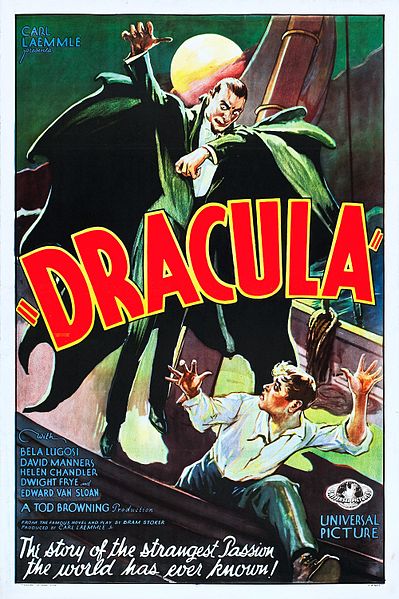
‘Frankenstein’ on film
Dr Sarah Artt from Edinburgh Napier University looks at the impact Frankenstein has had on film and television since its first adaptation in the early 1900s to present day.
First adapted for the cinema in 1910, Frankenstein’s cinematic journey stretches all the way to the present. Yet, when people think of an image to associate with Frankenstein, they usually imagine the performance created by Boris Karloff as the Creature in James Whale’s 1931 film. This is a film whose creation sequence is so visually influential that we have encountered it over and over, rarely seeing it in its original context. It has been widely and frequently parodied, in films like Young Frankenstein (Mel Brooks, 1974), Weird Science (John Hughes, 1985) and Frankenweenie. Even more recent television series like Penny Dreadful draw on the imagery of this creation scene with its snapping electrical currents.
 The 1931 Frankenstein was made on the back of the success of Universal Pictures’ Dracula (Tod Browning, 1931) starring Bela Lugosi in the lead role. Similarly, in 1993 Francis Ford Coppola released his lavish Bram Stoker’s Dracula—an adaptation filled with gothic trimmings and packed with star performances. Kenneth Branagh’s high profile adaptation Mary Shelley’s Frankenstein (1994) follows the release pattern of its most lingering cinematic forbears. Branagh’s adaptation is a film that abounds with references: the film refers to a variety of cultural and literary texts, it refers to Mary Shelley’s novel, and the film’s own cinematic antecedents. An example of this is the film’s depiction of the birth of Victor’s brother William, during which their mother dies. This scene of William’s birth does not occur in Shelley’s novel—this is only in the 1994 adaptation. This particular sequence is part of how the film tries to position itself as part of the horror genre, but it also parallels Mary Wollstonecraft Shelley’s own birth, after which her mother Mary Wollstonecraft Godwin died. Scenes like this, which allude to a famous author’s personal life, are one of the ways in which screen adaptations make use of more than just the source text.
The 1931 Frankenstein was made on the back of the success of Universal Pictures’ Dracula (Tod Browning, 1931) starring Bela Lugosi in the lead role. Similarly, in 1993 Francis Ford Coppola released his lavish Bram Stoker’s Dracula—an adaptation filled with gothic trimmings and packed with star performances. Kenneth Branagh’s high profile adaptation Mary Shelley’s Frankenstein (1994) follows the release pattern of its most lingering cinematic forbears. Branagh’s adaptation is a film that abounds with references: the film refers to a variety of cultural and literary texts, it refers to Mary Shelley’s novel, and the film’s own cinematic antecedents. An example of this is the film’s depiction of the birth of Victor’s brother William, during which their mother dies. This scene of William’s birth does not occur in Shelley’s novel—this is only in the 1994 adaptation. This particular sequence is part of how the film tries to position itself as part of the horror genre, but it also parallels Mary Wollstonecraft Shelley’s own birth, after which her mother Mary Wollstonecraft Godwin died. Scenes like this, which allude to a famous author’s personal life, are one of the ways in which screen adaptations make use of more than just the source text.
Most Frankenstein film and television adaptations are not wholly faithful to Shelley’s novel. They are usually also adapting some of Frankenstein’s earlier cinematic imagery, whether it comes from James Whale, or Tim Burton. In this way, Frankenstein screen adaptations comment on the relevance the Frankenstein has for us now.
Suggested viewing: Frankenstein (J. Searle Dawley, 1910); Frankenstein (James Whale, 1931); Bride of Frankenstein (James Whale, 1935); Frankenweenie (Tim Burton, 2012)
